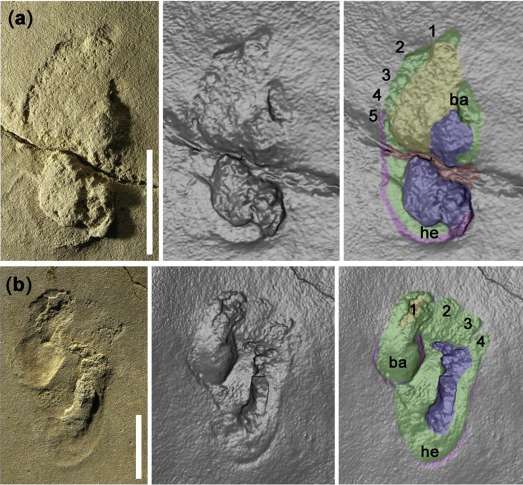Now, a new discovery on the Mediterranean island of Crete might be about to put yet another cat among those pigeons, as researchers claim that hominin footprints found on the island date back some 5.7 million years.
The fossils have been found in Trachilos, western Crete, and appear to show many hominin-like characteristics at a time when it has long been believed hominins were evolving in relative isolation in East Africa.
The tracks are bipedal, and seem to indicate that the creature that made them had a prominent ball of the foot, a large forward facing big toe, and a lack of claws, all of which are indicative of a hominin creator.
Published in the journal Proceedings of the Geologists’ Association, the researchers argue that despite lacking any other fossil bones, the footprints indicate that bipedal apes, with hominin features were clearly present in Europe some 5.7 million years ago.
This assertion is likely to be heavy picked apart by other anthropologists, not least because 4.4 million years ago the oldest hominin known from a fairly complete fossil, Ardipithecus ramidus, was still walking on ape-like feet in Ethiopia.
“This discovery challenges the established narrative of early human evolution head-on and is likely to generate a lot of debate,” explains Per Ahlberg, co-author of the latest paper, in a statement.
“Whether the human origins research community will accept fossil footprints as conclusive evidence of the presence of hominins in the Miocene of Crete remains to be seen.”
Interestingly, the timing of this latest discovery fits somewhat with another that was announced earlier this year, in which researchers suggest that our ancient ancestors may not have split from chimpanzees in the savanna’s of Africa, but instead in the grasslands of Europe.
This notion was based on two fossil jaw bones dating to 7.2 million years old in which the teeth are like modern humans’ rather than chimpanzees’.
As more and more finds are made, the history of us gets more and more complicated. Rather than just a nice, simple evolutionary line from ape to human, the picture that emerges is one of a dense thicket of species that form a convoluted and confusing image of our past.
This latest study simply adds to that tangle, and as newer finds are made, hopefully more sense will be able to be made of it.
Source: IFLscience.com
Source Article from http://feedproxy.google.com/~r/HumansAreFree/~3/YJJGWErTasg/57-million-year-old-hominin-footprints.html
Related posts:
Views: 0
 RSS Feed
RSS Feed

















 November 29th, 2017
November 29th, 2017  Awake Goy
Awake Goy 

 Posted in
Posted in  Tags:
Tags: 
















